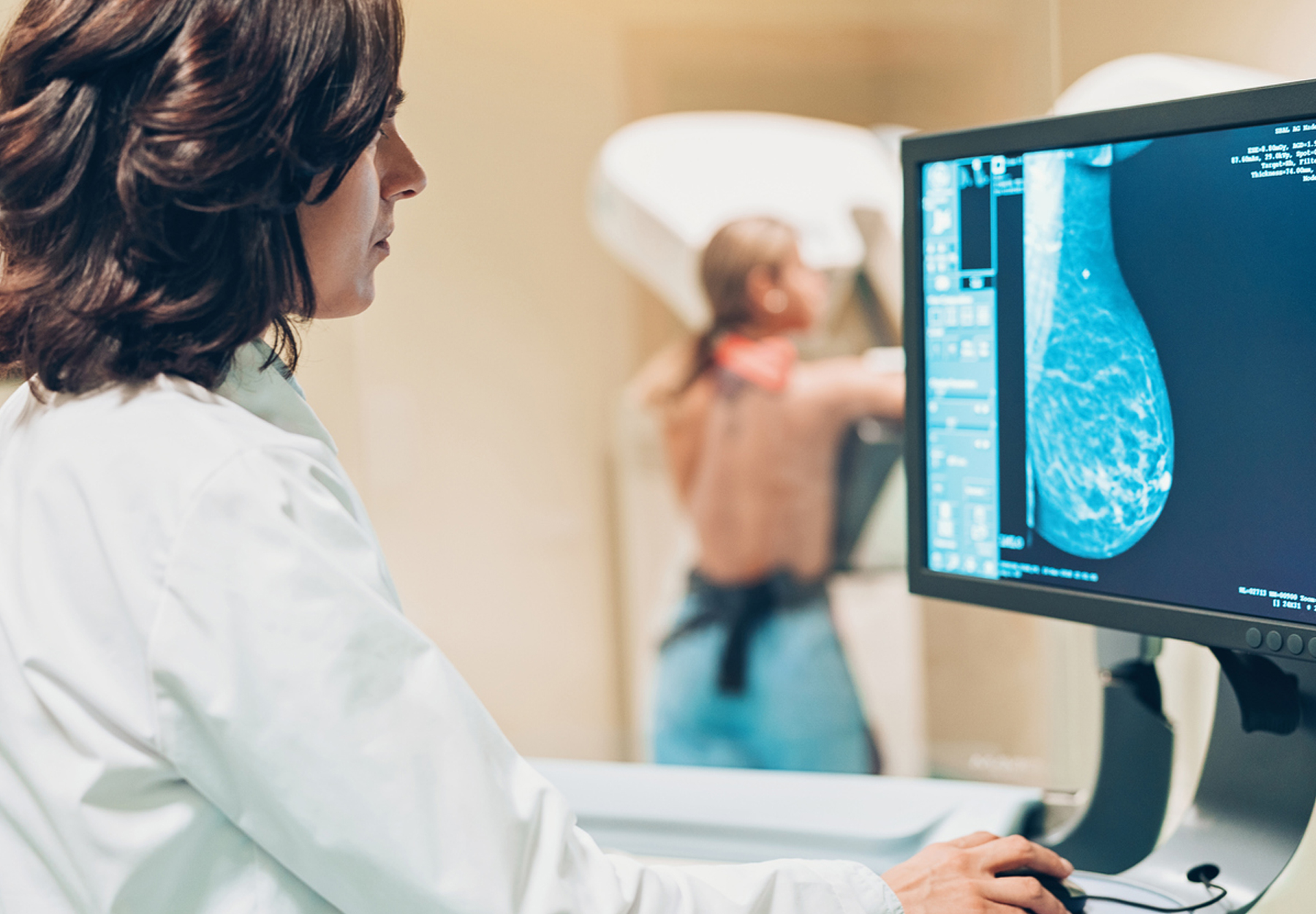Breast Cancer Screening Overdiagnosis Rate Is Only 15 Percent: Study
Approximately one in seven cases of screen-detected breast cancer are overdiagnosed. However, while overdiagnosis is surely a problem, it occurs far less frequently than generally estimated. That is the conclusion of a new study published in the March edition of the Annals of Internal Medicine. The Diagnostic Challenge Breast cancer is the most common cancer diagnosed and the second leading cause of death among US women. Only lung cancer is more deadly. Detecting breast cancer early saves lives. According to the American Cancer Society, the five-year survival rate for women with breast cancer is 90 percent. In other words, nine of 10 women who are diagnosed with breast cancer live at least five years longer after diagnosis. Mammogram screening is an effective method of detecting tumors. The downside is that it may result in what is known as “overdiagnosis,” which occurs when screening detects tumors that are actually harmless. The problem is that it is often difficult to judge the true danger posed by a tumor from a mammogram image. So, doctors who detect such tumors from a mammogram screening are apt to take a better safe than sorry approach and order biopsies, surgery, chemotherapy, and radiation that the patient […]

The Diagnostic Challenge
Breast cancer is the most common cancer diagnosed and the second leading cause of death among US women. Only lung cancer is more deadly. Detecting breast cancer early saves lives. According to the American Cancer Society, the five-year survival rate for women with breast cancer is 90 percent. In other words, nine of 10 women who are diagnosed with breast cancer live at least five years longer after diagnosis. Mammogram screening is an effective method of detecting tumors. The downside is that it may result in what is known as “overdiagnosis,” which occurs when screening detects tumors that are actually harmless. The problem is that it is often difficult to judge the true danger posed by a tumor from a mammogram image. So, doctors who detect such tumors from a mammogram screening are apt to take a better safe than sorry approach and order biopsies, surgery, chemotherapy, and radiation that the patient does not really need. In essence, these tumors would actually cause less harm if they went undetected.The Breast Cancer Overdiagnosis Study
To weigh the benefits of true early detection against the harms of overdiagnosis, researchers need to know how often the latter occurs during breast cancer screening. Regrettably, there is currently no consensus, with estimates ranging from zero to as high as 54 percent. One of the most influential estimates comes from a 2012 New England Journal of Medicine article suggesting that roughly 31 percent of all breast cancer cases were overdiagnoses. Nearly 10 years after the NEJM paper, Marc D. Ryser, PhD, and his colleagues from Duke University and the Fred Hutchinson Cancer Research Center set out to revisit the issue of breast cancer overdiagnosis frequency. Based on a cohort of 35,986 women, 82,677 mammograms and 718 diagnoses of breast cancer, the team determined that among all preclinical cancer cases, 4.5 percent (95 percent uncertainty interval [UI], 0.1 percent to 14.8 percent) were estimated as nonprogressive. Using data from a program of biennial screening of women ages 50 to 74, only 15.4 percent (UI of 9.4 percent to 26.5 percent) of screen-detected cancer cases were estimated to be overdiagnosed. Among these overdiagnoses:- 1 percent (UI of 0.2 percent to 20.1 percent) were due to detection of indolent preclinical cancer; and
- 3 percent (UI of 5.5 percent to 13.5 percent) were due to detection of progressive preclinical cancer in women who would have died of an unrelated cause before diagnosis.
The Overdiagnosis Problem Is Overstated
While one in seven, or 15 percent, is not insignificant, the estimated frequency of breast cancer overdiagnoses suggested by the Ryser study is still lower than most other reported estimates, including the 31 percent NEJM estimate. “We have known for a long time that the most prominent estimates of breast cancer overdiagnosis in the US were unrealistically high,” noted Ryser in a video released with the study. “We hope that our overdiagnosis estimate of 15 percent among screen-detected cancers will be adopted as a new standard and will lead to better informed decision making around breast cancer screening, follow-up testing, and treatment.” An accompanying editorial by Massachusetts General Hospital physicians Felippe O. Marcondes, MD, and Katrina Armstrong, MD, adds powerful perspective to the significance of these findings: “Given that approximately seven in 1,000 women will be diagnosed with invasive or noninvasive breast cancer on the basis of a screening mammogram, women should be told that approximately 1 in 1,000 women who undergo mammography will be found to have a cancer that would never have caused problems.” The physicians also address the overdiagnosis issue. There are 280,000 cases of breast cancer diagnosed in the US each year, they note. If 60 percent of these cases are found via screening, eliminating overdiagnoses would mean that 25,000 women would not have to endure unnecessary treatment. Potential methods of eliminating the overdiagnosis problem would include:- Developing better predictive ability with the goal of accurately identifying tumors that will not progress;
- Improving the accuracy of screening technologies to both reduce the risk for overdiagnosis and improve the ability to detect breast cancer missed by mammography; and
- Implementing prevention strategies to reduce the rate of breast cancer diagnosis overall, such as providing counseling about lifestyle modifications, as well as screening for genetic risk.
Takeaway
While neither the study nor the accompanying editorial address the issue directly, the benefits of the data and perspective they offer do enable a more informed evaluation of whether the benefits of early breast cancer detection outweigh the harms of overdiagnosis.Subscribe to Clinical Diagnostics Insider to view
Start a Free Trial for immediate access to this article